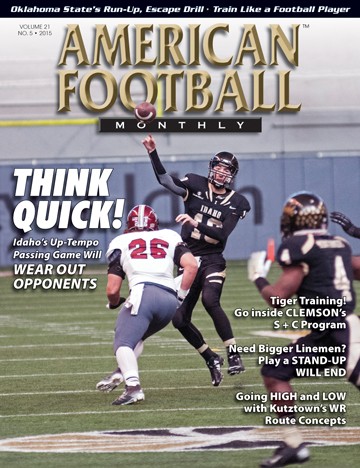Article CategoriesAFM Magazine
|
Improve Your Pass Defense by Stealing the QB's Time - Defensive backs can adjust their coverage with pre-snap quarterback reads.by: Rey HernandezRetired High School and College Coach © More from this issue The no-huddle spread offense as it is played today has certainly revolutionized the game. Creating mismatches, getting the ball into the hands of your playmakers, spreading the field and forcing the defense to play in space are three of the primary goals associated with this offensive scheme. Proper execution coupled with accurate quarterback reads is one way for a spread offense to gain a schematic twelfth man advantage in the passing game. Taking the snap from the shotgun position has been instrumental in creating better downfield vision for the quarterback. This has operated to improve not only the quarterback’s ability to make better reads, but it has also given quarterbacks more time to make these critical decisions. The key to eliminating this schematic 12th man advantage from a pass defense standpoint centers on....The full article can only be seen by subscribers.
|
|
|||||||
| HOME |
MAGAZINE |
SUBSCRIBE | ONLINE COLUMNISTS | COACHING VIDEOS |
Copyright 2025, AmericanFootballMonthly.com
All Rights Reserved





